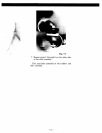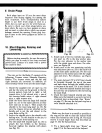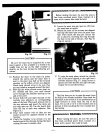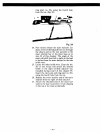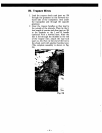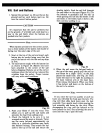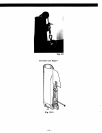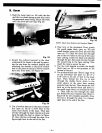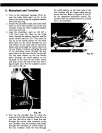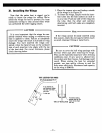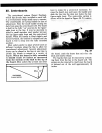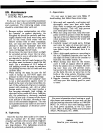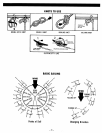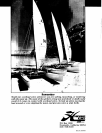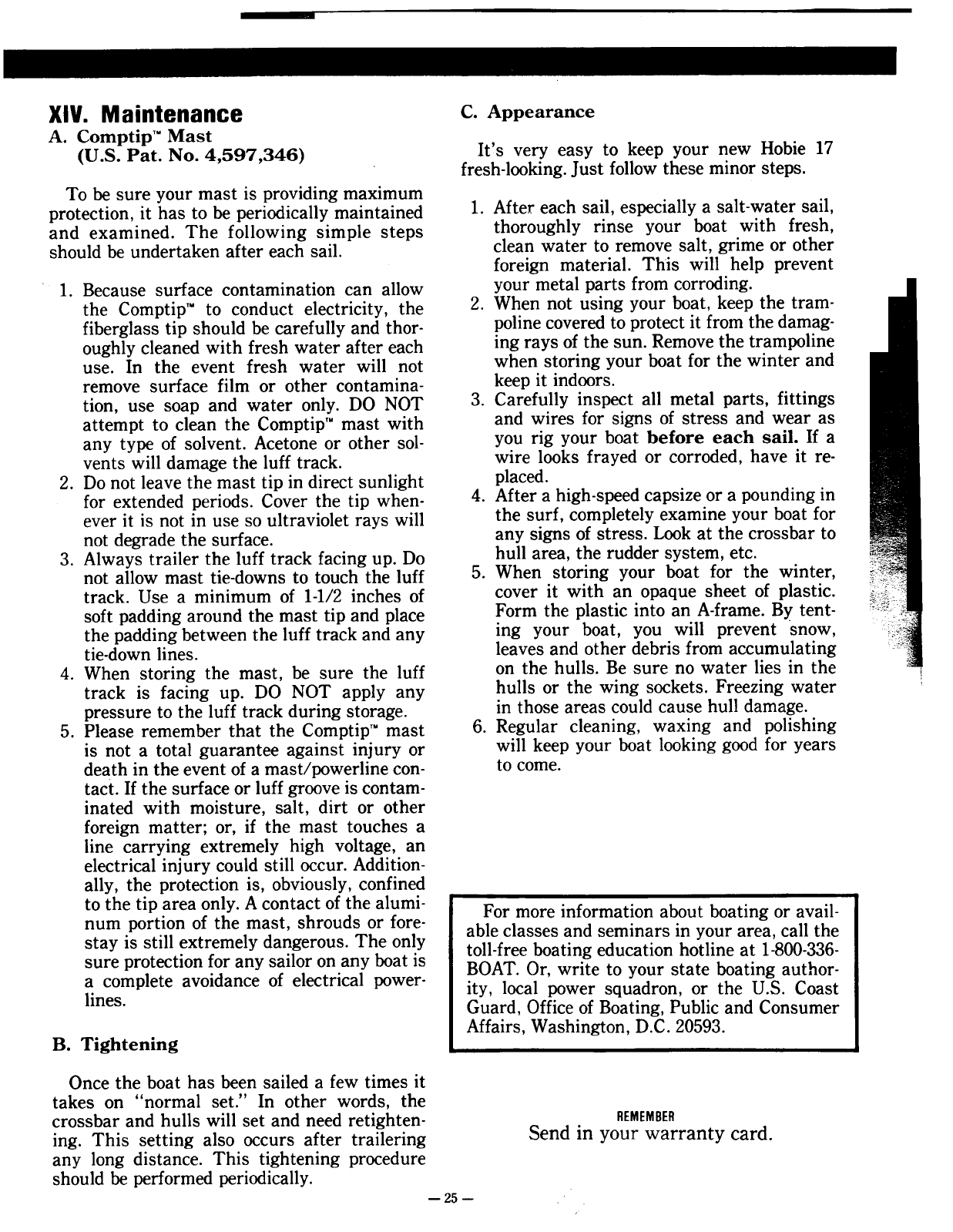
XIV. Maintenance C. Appearance
A. ComptipTM Mast
(U.S. Pat. No. 4,597,346) It's very easy to keep your new Robie 17
fresh-looking. Just follow these minor steps.
To be sure your mast is providing maximum
protection, it has to be periodically maintained 1. After each sail, especially a salt-water sail,
and examined. The following simple steps thoroughly rinse your boat with fresh,
should be undertaken after each sail. clean water to remove salt, grime or other
foreign material. This will help prevent
1. Because surface contamination can allow your metal parts from corroding.
the ComptipTM to conduct electricity, the 2. When not using your boat, keep the tram-
fiberglass tip should be carefully and thor- poline covered to protect it from the damag-
oughly cleaned with fresh water after each ing rays of the sun. Remove the trampoline
use. In the event fresh water will not when storing your boat for the winter and
remove surface film or other contamina- keep it indoors.
tion, use soap and water only. DO NOT 3. Carefully inspect all metal parts, fittings
attempt to clean the ComptipTM mast with and wires for signs of stress and wear as
any type of solvent. Acetone or other sol- you rig your boat before each sail. If a
vents will damage the luff track. wire looks frayed or corroded, have it re-
2. Do not leave the mast tip in direct sunlight placed.
for extended periods. Cover the tip when- 4. After a high-speed capsize or a pounding in
ever it is not in use so ultraviolet rays will the surf, completely examine your boat for
not degrade the surface. any signs of stress. Look at the crossbar to
3. Always trailer the luff track facing up. Do hull area, the rudder system, etc.
not allow mast tie-downs to touch the luff 5. When storing your boat for the winter,
track. Use a minimum of 1-1/2 inches of cover it with an opaque sheet of plastic.
soft padding around the mast tip and place Form the plastic into an A-frame. By tent-
t~e paddi~g between the luff track and any ing your boat, you will prevent snow,
tIe-down h~es. leaves and other debris from accumulating
4. When storIng the mast, be sure the luff on the hulls. Be sure no water lies in the
track is facing up. DO NOT apply any hulls or the wing sockets. Freezing water I
pressure to the luff track during storage. in those areas could cause hull damage.
5. ~lease remember that the ComptipTM mast 6. Regular cleaning, waxing and polishing
IS not.a total guarantee against injury or will keep your boat looking good for years
death m the event of a mast/powerline con- to come.
tact. If the surface or luff groove is contam-
inated with moisture, salt, dirt or other
foreign matter; or, if the mast touches a
line carrying extremely high voltage, an
electrical injury could still occur. Addition-
ally, the protection is, obviously, confined
to the tip area only. A contact of the alumi- ..
num portion of the mast, shrouds or fore- For more mformat~on a~out boating or avail-
stay is still extremely dangerous. The only able classes ~nd semm~rs m y~ur area, call the
sure protection for any sailor on any boat is toll-free boatIn.g educatIon hothne a! 1-800-336-
a complete avoidance of electrical power- ~OAT. Or, wrIte to your state boatIng author-
lines. Ity, local power squadron, or the U.S. Coast
Guard, Office of Boating, Public and Consumer
B T . ht . Affairs, Washington, D.C. 20593. 19 enmg .
Once the boat has been sailed a few times it
takes on "normal set." In other words, the
crossbar and hulls will set and need retighten- REMEMBER
ing. This setting also occurs after trailering Send in your warranty card.
any long distance. This tightening procedure
should be performed periodically.
-25-



